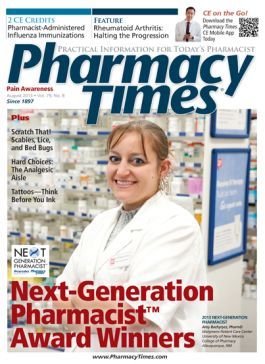Public Interest Report Places Pay-for-Delay Arrangements Under Fire
Pay-for-delay agreements between generic and brand name drug manufacturers continue to face scrutiny from public interest and consumer groups.
Community Catalyst, a nonprofit advocacy organization focused on health care, and the US Public Interest Research Group (US PIRG), a consumer interest group, released the report on July 11, 2013. It follows a June 2013 Supreme Court ruling allowing the Federal Trade Commission (FTC) to more closely examine the deals.
The Consumer Catalyst and US PIRG report surveys 20 drugs known to enter the market after pay-for-delay deals, although the FTC notes that as many as 142 generic medications have likely been delayed by the arrangements.
The report notes that the arrangements delayed generic medications for an average of 5 years, with some medications being delayed as long as 9 years. It estimates that the sales of brand name medicines totaled $98 billion during the period in which generic versions were delayed. The brand name drugs can cost an average of 10 times more than generic equivalents, with some costing as much as 33 times more, the report adds.
A joint statement from the groups expressed opposition to the pay-for-delay practice.
“It’s outrageous that drug companies are paying off the competition to keep prices high,” Laura Etherton, US PIRG health care policy analyst, said in the statement. “Because of this, Americans pay inflated drug prices, or go without necessary medication. This needs to stop.”
“These 20 drugs from the report are just the tip of the iceberg,” Well Wilkinson, director of Community Catalyst’s Prescription Access Litigation Project, added. “These the drug industry have schemes by forced consumers to pay billions more for just these 20 drugs. How many generics of other ‘blockbuster’ drugs have been kept out of reach by these backroom deals? How much has pay-for-delay cost consumers overall?”
According to Generic Pharmaceutical Association (GPhA) President Ralph G. Neas, the analysis incorrectly assumes that generic manufacturers pursuing patent challenges win the challenge every time. The amount of patent challenge suits that result in a settlement is much lower, he stated.
“The reality is that generic makers challenge patents at their own expense and at their own risk,” Neas said in a July 11, 2013, press release. “According to the Royal Bank of Canada Capital Markets Study of 2010, a robust study which reviewed 370 cases over 10 years, generic companies who challenge brand drugs with the goal of bringing consumers low-cost generic options win only 48% of the time. That makes litigation to conclusion a total crapshoot.”
The settlements allow generic medications to enter the market sooner, and often years earlier than waiting for patent expirations, he added. Entering the market prior to the patent expirations allows for savings to both patients and insurance providers.
Citing an IMS Institute for Healthcare Informatics study commission by GPhA, Neas noted that generic medications, as a result of patent settlements, resulted in $25 billion in savings over 8 years.
“According to the analysis conducted by the IMS Institute for Healthcare Informatics released this week, generic-generated savings on Adderall XR was $211 million dollars from January 2013 to the end of its patent,” the press release continued. “Lipitor, also on the PIRG/Community Catalyst list, was available as a generic more than 5 years before the patent expired, and the IMS Institute analysis shows it will save nearly $23 billion before the end of its patent. That is why it is critical for consumers and policymakers to understand: they are getting more generic choices, years earlier, because of patent settlements with consideration.”
According to Neas, if settlements with consideration are removed from the patent challenge process, generic companies will be less likely to pursue a litigation challenge. That, in turn, would lead to fewer generics entering the market and more expense for patients and the government, he added.

